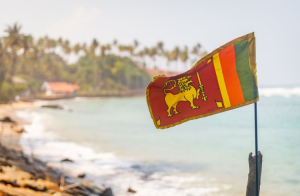I boarded a Sri Lankan Airlines flight to Colombo in February. It was my first international trip after 2020 and according to the crew, the flight was full. The distance was a mere three-and-a-half hours from Delhi, so the cramped seats without entertainment systems weren’t bothersome. In the seven days I spent in Sri Lanka, my photo library amassed a roll of pictures—so much so that I had to upgrade my storage plan—and a few made it on Instagram.
When I added geo-tags, I was asked the same question: “How is the situation? Is it safe to go to Sri Lanka?”
Yes, Sri Lanka is safe. I had another short-trip to Colombo in April and it verified what I had first noticed. Things have gone back to normal and tourists have nothing to worry about. Since 5% of the country’s GDP is dependent on tourism, it’s important for locals to send this message to the world.
Triple Whammy
For the past few years, the country in the Indian Ocean has been hit by back-to-back crises. The terror attacks shocked the island that had enjoyed peace after the brutality of the civil war (1983-2009). Tourist arrivals fell from 2.3 million in 2018 to 1.9 million in 2019.
And then the pandemic happened. Lockdowns around the world dwindled arrivals to 500,000 in 2020, most of whom had traveled in the first three months of the year, and 194,000 in 2021.
Then came last year’s economic crisis. It was the straw that broke the camel’s back. Fuel and medicine shortages, inflation, and hikes in food prices led to massive protests against the government. The world witnessed this heart-breaking collapse as reports of the worst economic crisis since 1948 made international headlines. Then political turmoil destabilized the nation.
The Revival
There were devastating stories being reported from Sri Lanka last year: 13-hour blackouts, people dying in queues to get fuel, and many forced to skip meals as food prices shot up 95%. The situation is not as desperate right now, but people are still suffering. Food prices are still very high and there is rationing of fuel. The cost of living has gone up, and an estimated 9 million people have been pushed into poverty.
However, there are no hassles for tourists in the country and its resilient locals want tourists to come back.
You don’t feel the pinch as a traveler in Sri Lanka. Taxis and autorickshaws are easily accessible. Trains and flights are running. Hotels are managing power cuts. Shopping malls are buzzing with people. Restaurants and cafes are plating up deliciousness. I went from Negombo to Sigiriya to Kandy to Colombo and there was normalcy everywhere—no signs of unrest. Cruise ships are also making stops in Colombo, I know this from first-hand experience.
Since 2022, the recovery has started with more than 700,000 people making it to the island nation. Indians have led the charge. This year is also looking positive for hotels and guides who are finally noticing a surge after the slump of the past few years. It helps that the government is campaigning to woo international travelers, particularly from India, but it’s a great destination for Americans, too.
One U.S. dollar equals 300 Sri Lankan Rupees. With occupancy as low as it is, you will be able to stretch your dollar further. The country has a beautiful coast and pristine beaches, a host of national parks, and inviting hill towns where tea is grown. Locals are hospitable, and luxury hotels are spread through the country’s farthest corners.
In the months since I have been back, I have answered truthfully that it’s an underrated country with such a wealth of nature, culture, and history that it deserves to be on the world’s radar. And, if you’re flying around the world, plan a halt at another South Asian country (the Maldives or India) because the tickets to this part of the world are exorbitantly expensive this year.

